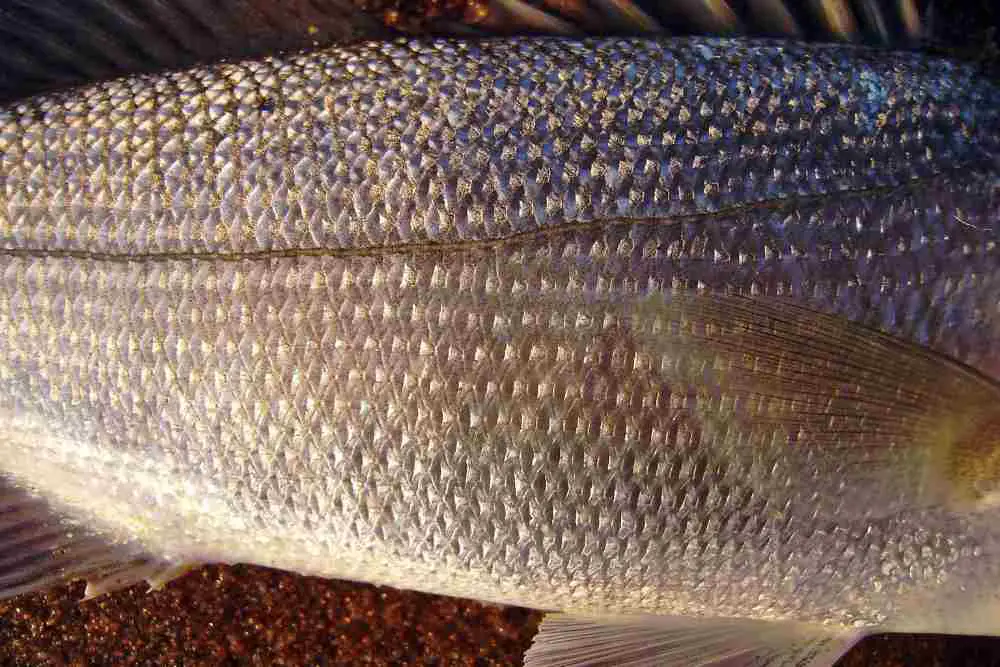The lateral line is a sensory system in fish that detects water movement and helps them navigate their environment. It consists of a series of specialized cells and sensory organs along the sides of a fish’s body.
This system allows fish to detect changes in water pressure and movement, aiding in predator avoidance, prey detection, and social interactions.
The lateral line plays a vital role in a fish’s survival by providing information about their surroundings and enabling them to respond quickly to potential threats or opportunities.
Understanding the function and importance of the lateral line can help us appreciate the incredible adaptation of fish to aquatic life.

What Is The Lateral Line On A Fish?
The lateral line is a sensory organ found in aquatic animals, serving various functions. It is a series of interconnected canals located along the sides of the body, detect changes in water pressure and movement.
This helps in sensing prey, avoiding predators, and navigating through the water.
The lateral line acts as a form of hydrodynamic radar, providing crucial information about the surrounding environment. It plays a significant role in the survival and behavior of aquatic animals.
The evolutionary development of the lateral line can be traced back to ancestral fish species, where it first emerged.
Over time, this sensory system has evolved and become more sophisticated, allowing aquatic animals to adapt and thrive in their respective habitats.
Fish Lateral Line Function
The fish lateral line is a sensory system found in most fish species that plays a crucial role in their ability to detect and respond to their aquatic environment. It consists of a series of specialized sensory organs and receptors located along the sides of a fish’s body.
The primary function of the lateral line is to detect changes in water movement and pressure, helping fish with various aspects of their survival and behavior. Here’s how the fish lateral line works:
- Detecting Water Movements: The lateral line is sensitive to subtle changes in water pressure and movements, such as vibrations and currents. These movements can result from various sources, including nearby prey or predators, obstacles in the water, or changes in the fish’s own movement.
- Orientation and Balance: Fish use the information gathered by the lateral line to orient themselves in their environment and maintain balance. For example, it helps fish maintain their position in a school, avoid collisions with other fish or objects, and navigate in dark or murky waters where vision is limited.
- Hunting and Predation: Predatory fish use the lateral line to detect the vibrations produced by the movements of potential prey. This helps them locate and capture prey even in low-light conditions. Conversely, prey fish can sense the approach of predators and take evasive actions to avoid being caught.
- Communication: Some fish species use their lateral line for communication. They can produce vibrations or signals that are detected by other members of their species. This communication is particularly important during courtship and group behaviors.
- Environmental Awareness: Fish can also use the lateral line to monitor changes in water temperature and pressure, which can indicate changes in weather or the presence of obstacles like rocks or underwater structures.
Mechanism And Anatomy Of The Lateral Line
The lateral line is a sensory system found in fish and some other aquatic organisms. This system serves various purposes in these animals, including detecting movement and vibrations in the surrounding water. The lateral line consists of sensory cells called hair cells and electroreceptors.
These cells are found in clusters called neuromasts, which are scattered along the body of the fish. The structure of the lateral line system includes canals that run along the fish’s body, housing the neuromasts. These canals are arranged in a specific pattern depending on the species.
The neuromasts in the lateral line scales help the fish perceive changes in water pressure and movement, allowing them to navigate their environment and detect prey or predators.
Sensory Function And Importance Of The Lateral Line
The lateral line, a sensory system in fish and some amphibians, plays a crucial role in various functions. It detects underwater vibrations, helping these creatures sense motion and movement of nearby objects. Additionally, it enables them to respond to predator and prey activity, aiding in survival.
The lateral line also contributes to navigation and orientation, allowing fish to navigate through their environment. In terms of social behavior, the lateral line influences schooling behavior, as fish use it to align their movements with the group. Moreover, this sensory system has a significant impact on nocturnal feeding, allowing fish to locate food sources in low light conditions.
Adaptations And Variations Of The Lateral Line
The lateral line is a sensory system found in fish, amphibians, and certain invertebrates. It plays a crucial role in their survival and navigation.
Different types of lateral line systems exist across species, with adaptations and variations. Comparisons between fish, amphibians, and invertebrates highlight the diversity of this sensory system.
Deep-sea animals have developed unique lateral line adaptations to detect movement and vibrations despite the darkness of their environment. Specific species also exhibit specialized functions of the lateral line, such as echolocation in dolphins and whales, allowing them to locate objects and communicate.
Electric fish, on the other hand, rely on electroreception through their lateral line to detect prey and navigate their surroundings.
The Lateral Line And Environmental Factors
The lateral line, found in fish and aquatic animals, is responsible for detecting movement and environmental factors. Water flow and turbulence greatly impact the sensitivity of the lateral line. Fish adapt their behavior in turbulent waters to navigate and respond to their surroundings.
However, water pollution can negatively affect the lateral line, leading to sensory impairments and changes in behavior. Therefore, it is crucial to maintain proper lateral line health to ensure optimal functioning. Proper care and attention should be given to protect the lateral line from environmental pollutants and disturbances.